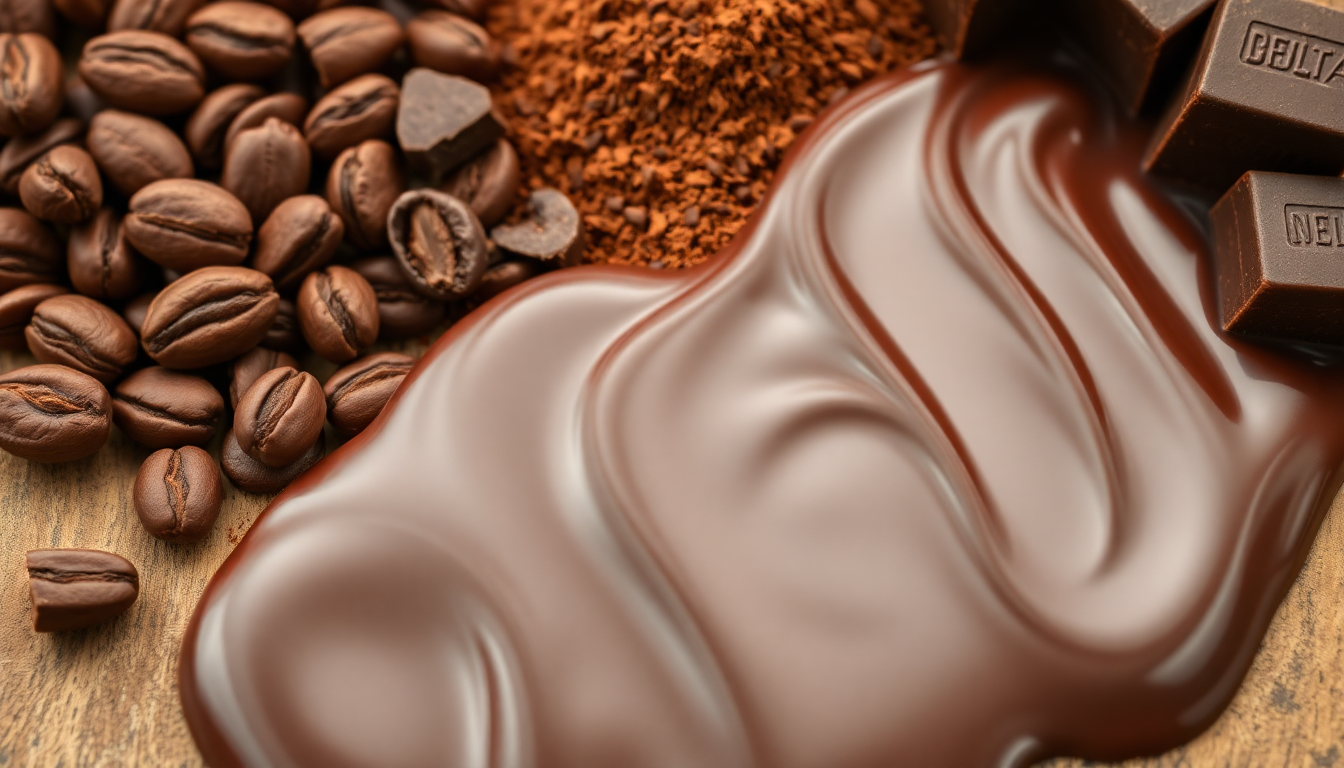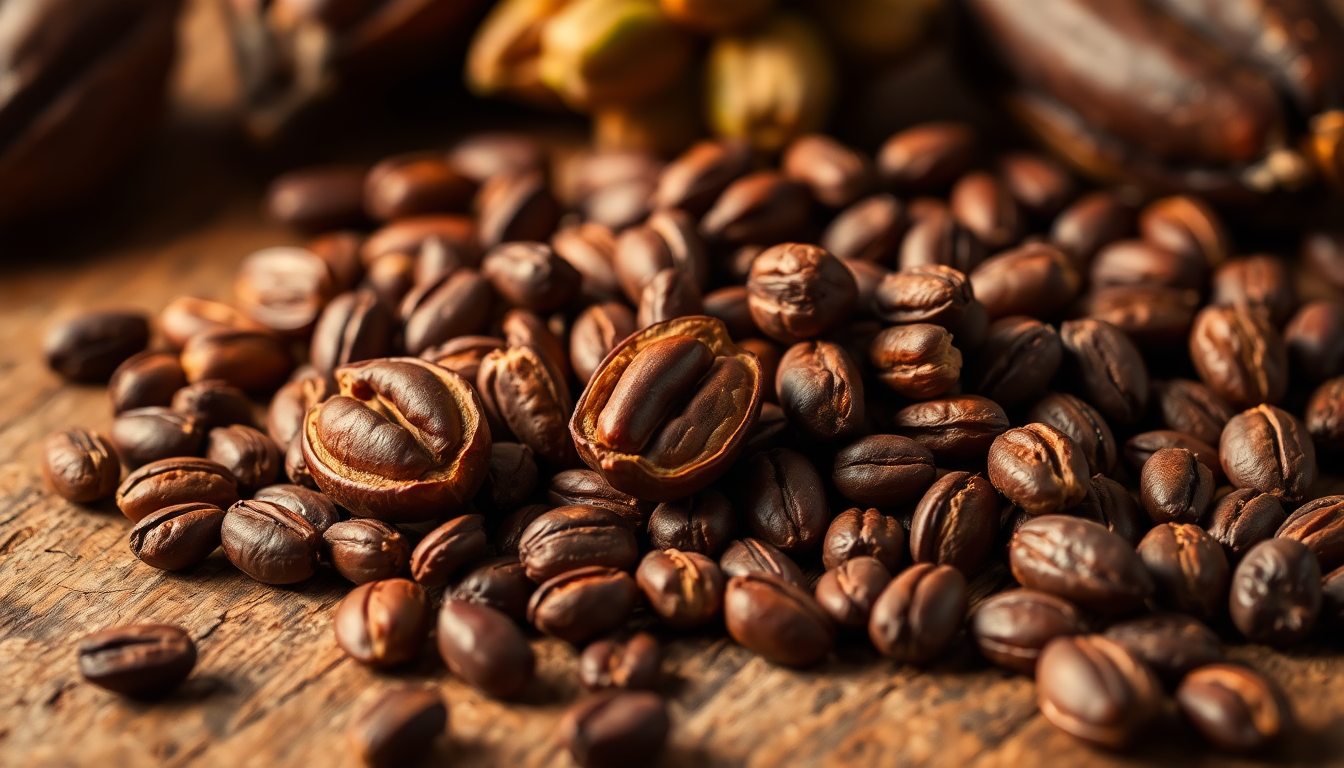
The Fascinating Composition of Chocolate
Chocolate is one of the world's most beloved treats, enjoyed across cultures and generations for its rich flavor and satisfying texture. Despite its ubiquity, many chocolate lovers remain unaware of what actually goes into their favorite confection. This comprehensive guide explores the ingredients, processing methods, and science behind chocolate, revealing the complex journey from raw materials to delicious finished product. Understanding what chocolate is made of not only enhances your appreciation for this remarkable food but also helps you make more informed choices as a consumer.
The Essential Building Blocks: Primary Ingredients
At its core, chocolate consists of a relatively small number of essential components that work together to create its distinctive character.
Cacao Beans: The Heart of Chocolate
The journey of chocolate begins with the cacao bean, the seed of the Theobroma cacao tree native to tropical regions of the Americas.
-
Composition: Cacao beans contain approximately:
- 50-55% cocoa butter (natural vegetable fat)
- 45-50% cocoa solids (the non-fat components)
- Over 600 flavor compounds
- Caffeine (in small amounts) and theobromine (the primary stimulant)
- Various minerals including magnesium, iron, zinc, and manganese
-
Processing: Raw cacao beans undergo several transformations:
- Fermentation: Freshly harvested beans ferment for 2-7 days, developing flavor precursors
- Drying: Beans are dried to reduce moisture to about 7%
- Roasting: Heat treatment at 120-150°C (248-302°F) develops flavors
- Cracking and winnowing: Separates the outer shell from the valuable inner nib
- Grinding: Crushes nibs into cocoa liquor (pure ground cacao)
- Flavor contribution: Cacao provides the fundamental chocolate flavor, with notes ranging from fruity and floral to nutty and earthy depending on bean origin, variety, and processing methods.
Cocoa Butter: The Smooth Operator
Cocoa butter is the natural fat present in cacao beans, playing a crucial role in chocolate's texture and mouthfeel.
-
Chemical structure: Primarily composed of three fatty acids:
- Palmitic acid (25-30%)
- Stearic acid (30-35%)
- Oleic acid (35-40%)
-
Physical properties:
- Melts just below human body temperature (93-95°F)
- Solidifies in six different crystal forms (polymorphs)
- Only Form V crystals create properly tempered chocolate
- Provides the clean "snap" of quality chocolate
- Responsible for the smooth, creamy mouthfeel
-
Production methods:
- Extracted from cocoa liquor through pressing
- Can be filtered for purity and deodorized if desired
- Premium chocolate retains natural cocoa butter without substitutions
Sweeteners: Balancing Bitterness
Sweeteners counteract the natural bitterness of cacao and create chocolate's approachable flavor profile.
-
Sugar varieties commonly used:
- Refined white sugar (sucrose): The most common sweetener
- Brown sugar: Adds molasses notes
- Coconut sugar: Provides caramel-like flavor
- Maple sugar: Contributes distinctive maple notes
- Honey: Used in some artisanal chocolates
-
Sugar alternatives:
- Maltitol and erythritol for sugar-free chocolate
- Stevia and monk fruit for natural zero-calorie options
- Inulin as both sweetener and fiber source
-
Impact on chocolate:
- Affects crystallization and texture
- Influences shelf life and moisture stability
- Determines caloric content
- Contributes to viscosity in liquid chocolate
Milk Components: Creating Creamy Texture
Milk chocolate, the world's most popular variety, incorporates dairy ingredients for a more mellow, creamy profile.
-
Common milk ingredients:
- Milk powder (whole or skimmed)
- Condensed milk
- Milk crumb (pre-processed mixture of milk, sugar, and cocoa)
- Fresh cream (in some premium chocolates)
- Whey powder (in more economical formulations)
-
Nutritional contribution:
- Adds protein (3-9%)
- Introduces calcium and other minerals
- Increases vitamin content
- Adds lactose (milk sugar)
-
Flavor and texture effects:
- Softens chocolate flavor
- Creates creamy mouthfeel
- Adds dairy notes ranging from fresh milk to caramel
- Reduces bitterness perception
Secondary Ingredients: Enhancing the Experience
Beyond the core components, chocolate often contains additional ingredients that modify flavor, texture, and shelf life.
Emulsifiers: Creating Smooth Consistency
Emulsifiers play a crucial technical role in chocolate manufacturing.
-
Lecithin: The most common emulsifier
- Typically derived from soybeans or sunflowers
- Reduces chocolate viscosity
- Allows for reduced cocoa butter usage
- Used at 0.1-0.5% of total formula
- Helps prevent bloom (whitish surface discoloration)
-
PGPR (Polyglycerol polyricinoleate):
- Often used in combination with lecithin
- Specifically reduces yield value (initial resistance to flow)
- Particularly useful in chocolate coatings
- Helps chocolate release easily from molds
-
Function in chocolate:
- Acts at the interface between fat and non-fat components
- Improves flow properties during manufacturing
- Reduces the amount of cocoa butter needed
- Extends shelf life by preventing fat separation
Vanilla and Vanillin: The Aromatic Enhancers
Vanilla is the world's most popular flavor, and it plays a special role in chocolate.
-
Natural vanilla:
- Derived from orchid beans of the Vanilla genus
- Contains over 250 flavor compounds
- Exists in chocolate as either extract or ground beans
- Adds complexity and depth to chocolate flavor
-
Vanillin:
- The primary flavor compound in vanilla
- Can be synthesized artificially at lower cost
- Found in many commercial chocolates
- Provides recognizable vanilla note without complexity
-
Flavor impact:
- Enhances perceived sweetness without adding sugar
- Rounds out harsh notes in cocoa
- Creates harmonious flavor profile
- Acts synergistically with chocolate flavor compounds
Salt: The Flavor Amplifier
Though often unnoticed in ingredient lists, salt plays a vital role in chocolate's flavor profile.
-
Usage levels:
- Conventional chocolate: 0.1-0.3%
- Salted chocolate: 0.5-1.5%
- Sea salt inclusions: Up to 3% in specialized products
-
Types used:
- Fine salt crystals for even distribution
- Flake salt for visible inclusions
- Sea salt for artisanal products
- Flavored salts for specialized chocolates
-
Flavor effects:
- Suppresses bitterness perception
- Enhances sweetness at low concentrations
- Activates the umami taste receptor
- Creates contrast in "sweet-salty" combinations
Inclusions and Flavorings: Creative Additions
Modern chocolate often features additional ingredients that add flavor, texture, and visual appeal.
-
Common inclusions:
- Nuts (almonds, hazelnuts, peanuts)
- Dried fruits (raisins, cranberries, cherries)
- Spices (cinnamon, chili, cardamom)
- Herbs (mint, lavender, basil)
- Coffee beans or grounds
- Crunchy elements (cookies, praline, crisped rice)
-
Additional flavorings:
- Essential oils (orange, peppermint, bergamot)
- Alcohol (whiskey, rum, liqueurs)
- Fruit concentrates and powders
- Caramel and toffee components
- Synthetic flavor compounds
Optional Ingredients: Industrial Adaptations
Mass-produced chocolate often contains ingredients not found in premium or artisanal products.
Vegetable Fats: Beyond Cocoa Butter
Many commercial chocolates incorporate non-cocoa fats for cost reduction and stability improvement.
-
Common vegetable fats used:
- Palm oil and palm kernel oil
- Shea butter
- Illipe butter
- Coconut oil
- Specialized cocoa butter equivalents (CBEs)
-
Regulatory considerations:
- EU regulations allow up to 5% non-cocoa vegetable fats
- US regulations require specific labeling for non-cocoa fats
- Some countries prohibit calling products "chocolate" if they contain substitutes
-
Impact on chocolate:
- Often increases melting point for stability in warm climates
- Can create waxy mouthfeel if overused
- May accelerate rancidity and reduce shelf life
- Usually reduces production costs significantly
Milk Fat: Softening Texture
Additional milk fat beyond that naturally present in milk powder affects chocolate character.
-
Sources and forms:
- Anhydrous milk fat (water-free butterfat)
- Butter oil
- Clarified butter
-
Effects on chocolate:
- Softens texture, creating softer "snap"
- Increases creaminess and mouthfeel
- Contributes milky flavor notes
- Lowers melting point
Preservatives and Stabilizers: Extending Shelf Life
While pure chocolate has a naturally long shelf life, some products incorporate additives for stability.
-
Common preservatives:
- Tocopherols (Vitamin E derivatives)
- Citric acid
- BHT and BHA (in some commercial products)
- Sorbic acid (in filled chocolates)
-
Stabilizers for specialized applications:
- Sorbitol and glycerin (moisture control)
- Modified starches (in some filled products)
- Gums and alginates (for special effects)
-
Purpose and function:
- Prevent oxidation of fats
- Control water activity
- Maintain texture during storage
- Prevent sugar bloom in certain environments
The Chocolate Manufacturing Process
Understanding what chocolate is made of requires knowledge of how its ingredients are transformed during production.
Mixing and Refining: Creating the Base
The first manufacturing steps combine raw ingredients into a cohesive mass.
-
Initial mixing:
- Cocoa liquor, sugar, and milk powder (if used) combined
- Typically done in batch mixers at 40-50°C (104-122°F)
- Creates a thick, somewhat grainy paste
- Emulsifiers may be added at this stage
-
Refining:
- Mixture passes through steel rollers in a five-roll refiner
- Particle size reduced to 15-35 microns
- Too large: gritty texture
- Too small: sticky, high-viscosity chocolate
- Critical for mouthfeel and flavor release
Conching: Developing Flavor and Texture
The conching process, named after the shell-shaped containers originally used, is crucial for quality chocolate.
-
Mechanical action:
- Continuous agitation and aeration
- Generates heat through friction
- Typical temperatures: 60-80°C (140-176°F)
- Duration: 4-72 hours depending on desired quality
-
Chemical changes during conching:
- Volatile acids evaporate
- Moisture content reduces to less than 1%
- Flavor precursors react to form final flavor compounds
- Cocoa particles become coated with fat
- Lecithin typically added toward end of process
-
Impact on finished chocolate:
- Removes harsh, acidic flavors
- Develops smooth mouthfeel
- Creates homogeneous texture
- Improves viscosity and flow properties
Tempering: Creating Stable Crystals
Tempering creates the proper crystal structure in cocoa butter for optimal appearance and texture.
-
The tempering process:
- Melting: Heating chocolate to approximately 45°C (113°F)
- Cooling: Reducing temperature to about 27°C (80°F)
- Reheating: Raising temperature to 31-32°C (88-90°F) for dark chocolate
- Maintaining working temperature during molding or enrobing
-
Crystal formation:
- Cocoa butter can crystallize in six different forms (I-VI)
- Form V is desired for proper chocolate
- Proper tempering ensures Form V predominates
- Seed crystals guide crystallization of remaining fat
-
Results of proper tempering:
- Glossy appearance
- Clean snap when broken
- Proper contraction from molds
- Resistance to bloom formation
- Extended shelf life
Molding and Cooling: The Final Form
The last stage transforms liquid chocolate into its familiar solid form.
-
Molding methods:
- Shell molding: Creating hollow shapes
- Solid molding: Filling molds entirely
- Inclusion molding: Adding nuts, fruits, etc.
- One-shot molding: Simultaneously depositing chocolate and fillings
-
Cooling tunnel:
- Carefully controlled temperature reduction
- Typical cooling zones: 15°C, 10°C, 15°C (59°F, 50°F, 59°F)
- Controlled humidity to prevent condensation
- Cooling time: 15-30 minutes depending on size
-
Demolding:
- Molds inverted and tapped
- Mechanical removal systems
- Chocolate contracts during cooling, aiding release
- Products inspected for defects
Chocolate Types and Their Unique Compositions
Different chocolate varieties have distinct ingredient profiles that define their characteristics.
Dark Chocolate: The Purist's Choice
Dark chocolate contains the fewest ingredients while delivering the most intense chocolate experience.
-
Typical composition:
- Cocoa solids: 35-85%
- Cocoa butter: 25-40%
- Sugar: 10-55%
- Vanilla/vanillin: trace amounts
- Lecithin: 0.1-0.5%
-
Legal definitions:
- US: Minimum 35% cocoa components
- EU: Minimum 35% cocoa solids, with at least 18% cocoa butter
- UK: Minimum 35% cocoa solids, with at least 18% cocoa butter
-
Subcategories:
- Semisweet: 35-60% cocoa
- Bittersweet: 60-85% cocoa
- Unsweetened: 85-100% cocoa
Milk Chocolate: The Popular Favorite
Milk chocolate balances cocoa flavor with dairy creaminess.
-
Typical composition:
- Cocoa solids: 10-30%
- Cocoa butter: 15-25%
- Milk solids: 12-25%
- Sugar: 40-50%
- Vanilla/vanillin: trace amounts
- Lecithin: 0.1-0.5%
-
Legal definitions:
- US: Minimum 10% chocolate liquor, 12% milk solids
- EU: Minimum 25% cocoa solids, 14% milk solids
- UK: Minimum 25% cocoa solids, 20% milk solids
-
Regional variations:
- Swiss: Higher milk content, often condensed milk-based
- American: Lower cocoa percentage, sweeter profile
- British: Higher milk solids, distinctive flavor
White Chocolate: The Cocoa-Butter Confection
Despite lacking cocoa solids, white chocolate retains a connection to the cacao bean.
-
Typical composition:
- Cocoa butter: 20-35%
- Milk solids: 14-25%
- Sugar: 40-60%
- Vanilla/vanillin: higher levels than dark or milk
- Lecithin: 0.1-0.5%
-
Legal definitions:
- US: Minimum 20% cocoa butter, 14% milk solids, maximum 55% sugar
- EU: Minimum 20% cocoa butter, 14% milk solids
- UK: Minimum 20% cocoa butter, 14% milk solids
-
Quality indicators:
- Higher cocoa butter percentage correlates with quality
- Natural vanilla versus synthetic vanillin
- Absence of additional vegetable fats
- Yellow ivory color versus bright white (natural vs. deodorized)
Ruby Chocolate: The Newcomer
Introduced in 2017, ruby chocolate offers a distinctive pink color and berry flavor.
-
Composition:
- Special ruby cocoa beans
- Standard chocolate processing with proprietary modifications
- No added colors or berry flavors
- Similar structure to milk chocolate
-
Distinctive elements:
- Natural pink color from bean selection and processing
- Berry-like flavor notes
- Mild acidity compared to other chocolates
- Lower astringency than dark chocolate
The Science Behind Chocolate's Composition
The interaction of chocolate's ingredients creates its unique sensory properties.
Fat Crystallization: The Structure Builder
Cocoa butter's crystallization behavior determines chocolate's physical characteristics.
-
Crystal polymorphism:
- Form I: Soft, crumbly, melts at 17°C (63°F)
- Form II: Soft, crumbly, melts at 21°C (70°F)
- Form III: Firm, poor snap, melts at 26°C (79°F)
- Form IV: Firm, good snap, melts at 28°C (82°F)
- Form V: Glossy, excellent snap, melts at 34°C (93°F)
- Form VI: Hard, brittle, melts at 36°C (97°F)
-
Fat bloom mechanism:
- Migration of fat to surface
- Recrystallization into larger, visible crystals
- Caused by temperature fluctuations
- Accelerated by improper tempering
- Does not affect taste but reduces visual appeal
-
Fat compatibility:
- Cocoa butter compatibility with milk fat
- "Eutectic effect" between different fats
- Challenges in formulating stable blends
- Importance in chocolate with inclusions
Particle Size Distribution: The Texture Definer
The size of solid particles in chocolate significantly impacts mouthfeel.
-
Optimal particle size:
- Human tongue can detect particles larger than 30 microns
- Premium chocolate: 15-20 microns
- Standard chocolate: 20-30 microns
- Compound coating: 30-35 microns
-
Particle distribution:
- Bimodal distribution often preferred
- Smaller particles fill gaps between larger ones
- Reduces viscosity while maintaining smoothness
- Achieved through careful refining control
-
Texture perception:
- Smaller particles create smoother mouthfeel
- Larger particles provide distinct textural character
- Balance needed for optimal sensory experience
- Different chocolate styles require different distributions
Flavor Chemistry: The Taste Creator
Chocolate contains hundreds of flavor compounds that interact in complex ways.
-
Key flavor compounds:
- Pyrazines: Roasted, nutty notes
- Aldehydes: Cocoa, almond notes
- Esters: Fruity, floral notes
- Phenols: Smoky, spicy notes
- Terpenes: Woody, citrus notes
-
Flavor development:
- Maillard reactions during roasting
- Enzymatic changes during fermentation
- Oxidation during conching
- Volatile reduction during processing
- New compound formation during storage
-
Flavor persistence:
- Fat-soluble compounds melt slowly
- Water-soluble compounds release quickly
- Temperature affects release rate
- Fat crystals trap flavor compounds
- Melting sequence creates flavor "time release"
Chocolate Labeling and Regulations
Understanding what chocolate is made of requires knowledge of how it's regulated and labeled.
Global Regulatory Frameworks
Different regions have varying standards for what can be called "chocolate."
-
European Union:
- Directive 2000/36/EC defines chocolate categories
- Minimum 35% cocoa solids for dark chocolate
- Allows up to 5% specified vegetable fats
- Protected designations for traditional products
-
United States:
- FDA standards of identity (21 CFR 163)
- Based on specific ingredient percentages
- Distinctive terminology (sweet chocolate vs. semisweet)
- Different requirements for "chocolate liquor" versus "cacao percentage"
-
Other notable regulations:
- Japan: Less stringent definitions, focused on safety
- Switzerland: Strict rules for "Swiss chocolate" designation
- Belgium: Special rules for "Belgian chocolate" and pralines
Labeling Requirements and Terminology
Product labels provide important information about chocolate composition.
-
Mandatory information:
- Ingredient list in descending order by weight
- Allergen declarations (milk, soy, nuts)
- Nutritional values
- Net weight
- Manufacturer information
-
Common terminology:
- "Cacao percentage" or "cocoa content"
- "Single origin" or "bean to bar"
- "Couverture" for professional-grade chocolate
- "Compound coating" for cocoa butter alternatives
-
Quality designations:
- "Fine flavor" for superior cacao varieties
- "Craft" or "artisan" for small-batch production
- "Raw" for minimally processed chocolate
- "Organic," "Fair Trade," "Direct Trade" certifications
Health Considerations of Chocolate Components
The ingredients in chocolate affect its nutritional and health impacts.
Nutritional Composition
Chocolate provides various nutrients in different amounts depending on type.
-
Macronutrients (per 100g dark chocolate):
- Calories: 500-600
- Fat: 30-45g
- Carbohydrates: 45-65g
- Protein: 5-10g
- Fiber: 5-15g
-
Micronutrients:
- Iron: 6-15mg (30-80% daily value)
- Magnesium: 100-230mg (25-58% daily value)
- Copper: 1-1.8mg (50-90% daily value)
- Manganese: 1-2mg (50-100% daily value)
- Zinc: 2-3mg (15-30% daily value)
-
Antioxidants:
- Flavanols (epicatechin, catechin)
- Procyanidins
- Theobromine
- Polyphenols
Bioactive Compounds
Chocolate contains several compounds that may affect human physiology.
-
Methylxanthines:
- Theobromine: 250-500mg per 100g dark chocolate
- Caffeine: 5-35mg per 100g dark chocolate
- Effects include mild stimulation and vasodilation
- Lower caffeine content than coffee or tea
-
Flavonoids:
- Highest in dark chocolate, particularly minimally processed
- Potential cardiovascular benefits
- Possibly improved cognitive function
- Antioxidant properties
-
Phenylethylamine (PEA):
- Natural compound associated with mood elevation
- Present in small amounts in chocolate
- Mostly metabolized before reaching the brain
- Contributes to chocolate's reputation as a "mood food"
Allergens and Sensitivities
Certain chocolate ingredients can cause problems for sensitive individuals.
-
Common allergens in chocolate:
- Milk (even traces in dark chocolate)
- Soy (from lecithin)
- Nuts (as inclusions or cross-contamination)
- Wheat (in some filled chocolates)
-
Sensitivity concerns:
- Theobromine sensitivity in some individuals
- Migraine triggers for susceptible people
- Sugar content affecting blood glucose
- Oxalates affecting kidney stone formation
Conclusion: The Symphony of Ingredients
Chocolate represents a remarkable marriage of science, craftsmanship, and nature's bounty. From the complex chemistry of cocoa beans to the precise engineering of manufacturing processes, every aspect of chocolate's composition contributes to its unique appeal. What appears to be a simple pleasure actually involves hundreds of compounds, precise physical properties, and carefully controlled transformations.
Understanding what chocolate is made of enhances appreciation for this extraordinary food. Whether you prefer the intense purity of high-percentage dark chocolate, the creamy comfort of milk chocolate, or the buttery sweetness of white chocolate, knowing the ingredients and processes behind your favorite treat adds a new dimension to the experience.
As consumer interest in food origins grows, chocolate makers increasingly emphasize transparency about ingredients and sourcing. This evolution in the industry encourages higher standards and greater diversity of chocolate products. From bean-to-bar craft chocolates highlighting single origins to innovative flavored creations pushing boundaries, the world of chocolate continues to expand in exciting directions.
The next time you unwrap a chocolate bar, take a moment to consider the remarkable journey of its ingredients—from tropical forest to factory to your hand—and the centuries of innovation that transformed cacao seeds into one of the world's most beloved foods.

Claire Bennett
I'm Claire, a chocolate lover and artisan based in a small town where I run a tiny home kitchen dedicated to exploring everything chocolate. From single-origin dark bars to creamy ganache and handmade truffles, I find joy in working with all types of chocolate. I believe chocolate has a story, and I love bringing that story to life through humble, heartfelt creations.



Leave a comment
This site is protected by hCaptcha and the hCaptcha Privacy Policy and Terms of Service apply.